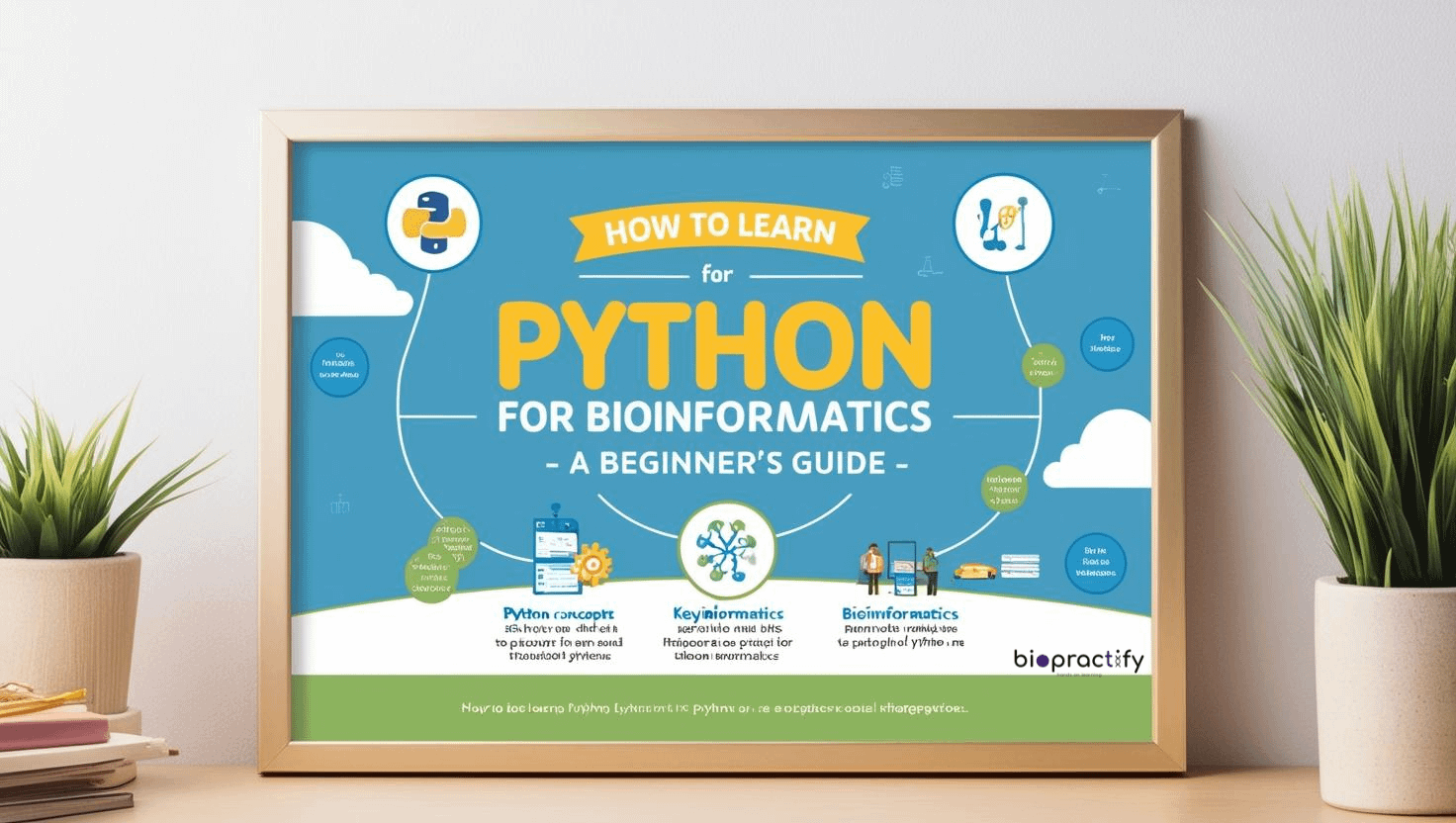Bioinformatics is changing the way we understand biology, and Python is the perfect tool for handling biological data. Whether you’re a student or a researcher, learning Python can help you analyze DNA sequences, visualize data, and automate tasks. In this guide, we’ll break down the best way to learn Python for bioinformatics—even if you’re a complete beginner!

Why Learn Python for Bioinformatics?
Before we dive into learning, let’s quickly understand why Python is widely used in bioinformatics:
✅ Easy to Learn: Python has a simple syntax, making it beginner-friendly.
✅ Powerful Libraries: Libraries like Biopython, NumPy, and Pandas simplify biological data analysis.
✅ Automation & Efficiency: Python can automate repetitive tasks like DNA sequence alignment, saving researchers hours of work.
✅ Great Community Support: A vast online community means help is always available.
Now that you know why Python is important, let’s explore how to learn Python for bioinformatics step by step.
Step 1: Learn the Basics of Python
Before applying Python to bioinformatics, you need a strong foundation in the language itself. Start with:
🔹 Python Syntax & Variables – Learn how Python works, including variables, data types, and loops.
🔹 Functions & Control Flow – Understand how to write reusable code with functions and decision-making structures.
🔹 Working with Lists & Dictionaries – These data structures are essential for handling biological data.
Best Free Resources to Start
📌 Python Official Tutorial
📌 W3Schools Python Tutorial
Spend 2-3 weeks on these basics before moving to bioinformatics applications.
Step 2: Learn Python for Bioinformatics with Essential Libraries
Once you’re comfortable with basic Python, it’s time to explore libraries that make bioinformatics easier:
1. Biopython – The Ultimate Bioinformatics Library
Biopython is a must-learn library for biological data analysis. It helps with:
🔹 Reading and Writing DNA Sequences
🔹 Sequence Alignment
🔹 Protein Structure Analysis
🚀 Quick Example: Reading a DNA sequence using Biopython
from Bio import SeqIO
# Read a FASTA file
for record in SeqIO.parse("example.fasta", "fasta"):
print(record.id)
print(record.seq)
2. NumPy & Pandas – Data Handling for Biologists
🔹 NumPy helps with numerical operations (great for genetic data).
🔹 Pandas makes it easy to handle large datasets like gene expression data.
🚀 Example: Using Pandas to analyze a gene expression dataset
import pandas as pd
# Load dataset
data = pd.read_csv("gene_expression.csv")
# Display first 5 rows
print(data.head())
Step 3: Learn Data Visualization for Bioinformatics
Once you start working with biological data, you’ll need to visualize your findings. The best tools for this are:
📊 Matplotlib – Basic plotting (histograms, scatter plots, etc.)
📊 Seaborn – Beautiful statistical graphics
📊 ggplot2 (in R) – Great for advanced biological data visualization
🚀 Example: Creating a gene expression heatmap using Seaborn
import seaborn as sns
import matplotlib.pyplot as plt
# Sample data
data = pd.DataFrame({'Gene': ['A', 'B', 'C'], 'Expression': [10, 30, 50]})
# Create heatmap
sns.heatmap(data.pivot("Gene", "Expression"), annot=True)
plt.show()
Step 4: Work on Mini Projects to Master Python for Bioinformatics
The best way to learn Python for bioinformatics is by working on real-world projects. Here are some ideas:
🔬 DNA Sequence Analysis – Read, process, and visualize DNA sequences.
🧬 Mutation Detection – Identify mutations in a given DNA sequence.
📊 Gene Expression Analysis – Work with real RNA-seq datasets.
🚀 Tip: You can find open-source datasets on platforms like NCBI, Kaggle, and GitHub.
Step 5: Join the Bioinformatics Community
You don’t have to learn alone! Join bioinformatics communities to get support and updates:
🔹 Biostars (https://www.biostars.org/) – A Q&A forum for bioinformatics questions.
🔹 Reddit r/bioinformatics – Discussions on the latest research and tools.
🔹 GitHub Repositories – Many open-source Python bioinformatics projects.
💡 Bonus Tip: Follow researchers and experts on LinkedIn to stay updated!
Conclusion: Start Your Python Bioinformatics Journey Today!
If you want to learn Python for bioinformatics, start with the basics, explore essential libraries, and apply your knowledge through projects. Bioinformatics is an exciting field, and Python is your key to unlocking its potential.
🔗 Ready to take your skills to the next level?
Join our Python & R Training for Biologists – Live from April 14-18, 2025!
🚀 Don’t wait—start coding today!


Leave a Reply